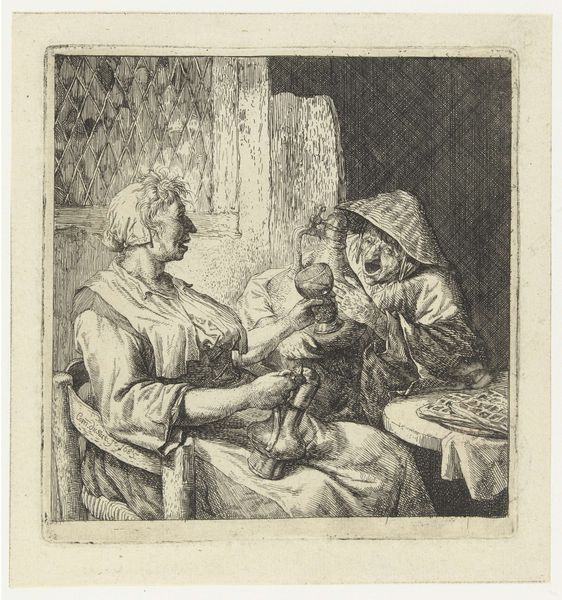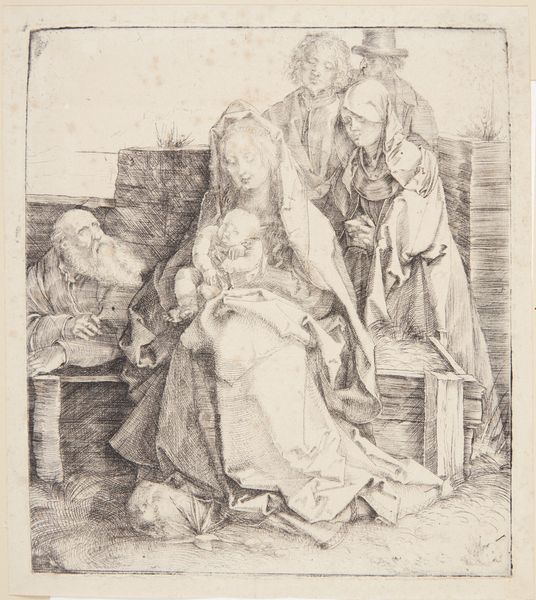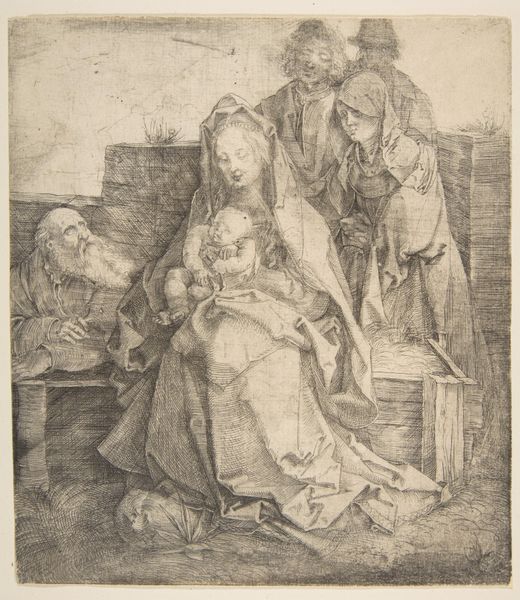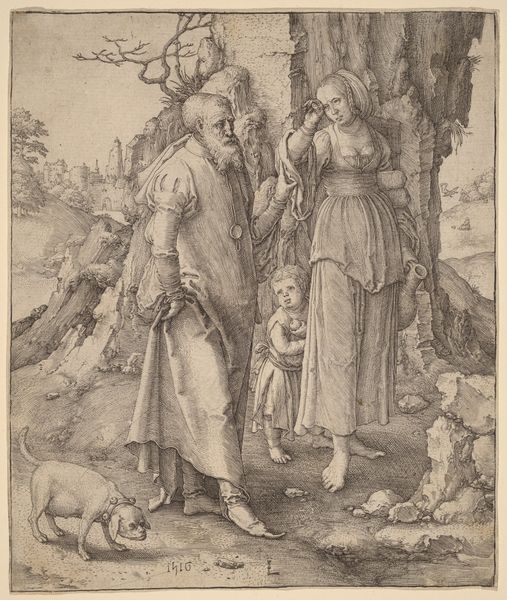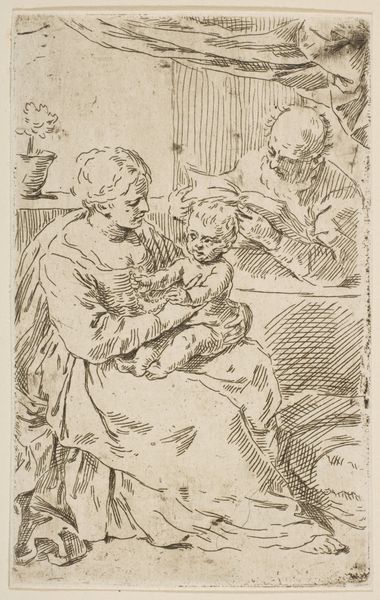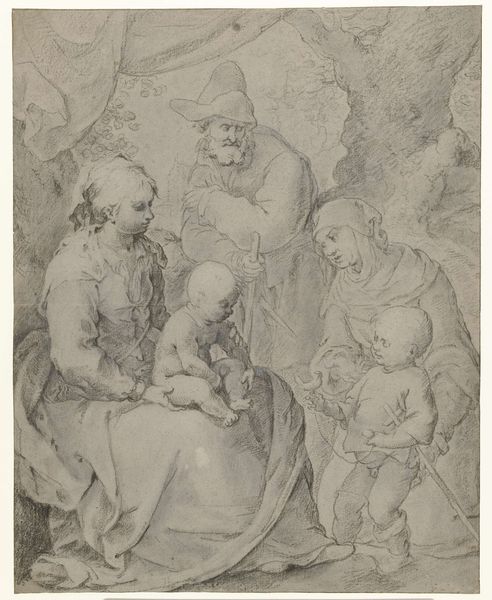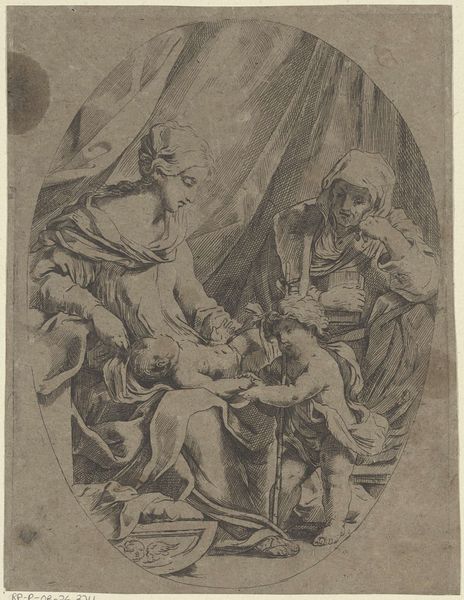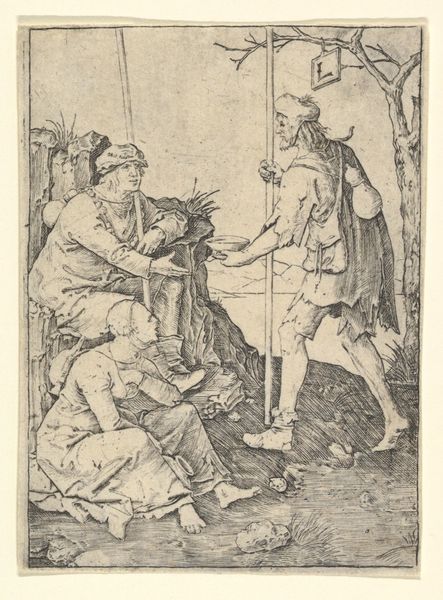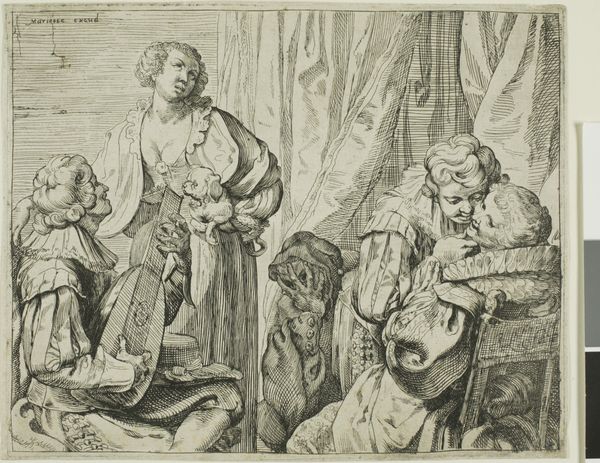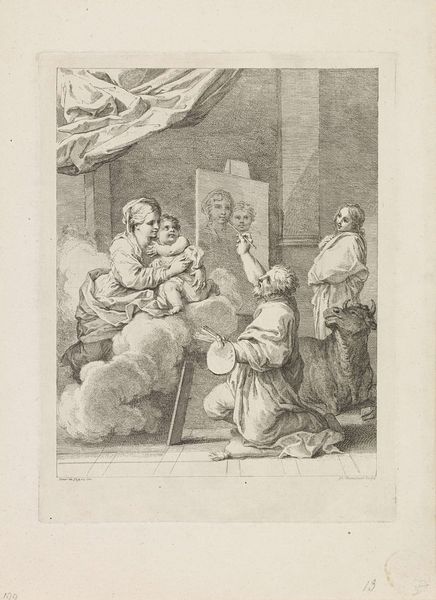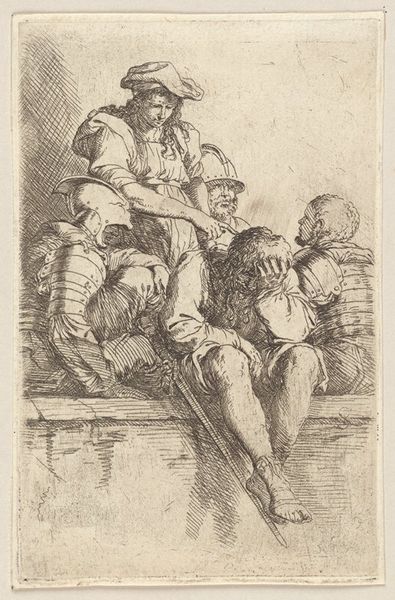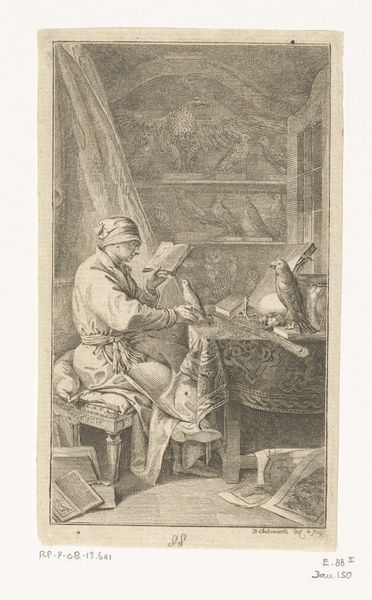
drawing, pencil
#
drawing
#
charcoal drawing
#
figuration
#
pencil drawing
#
pencil
#
history-painting
#
northern-renaissance
Dimensions: height 501 mm, width 403 mm
Copyright: Rijks Museum: Open Domain
Paulus Willemsz van Vianen rendered this image of The Holy Family in the late 16th or early 17th century using graphite or black chalk on paper. The artist skillfully used line and shading to create depth and texture, giving the figures a lifelike presence. The choice of drawing as a medium speaks to the artist's interest in the immediacy of the creative process, and the social context in which the work was created. Drawing was a fundamental skill for artists in this era. The level of detail suggests a time-consuming process, demanding careful attention to form and composition. The drawing’s significance goes beyond its representational value. It reflects the labor and skill involved in its making, and it invites us to consider the social and economic conditions that shaped artistic production during the artist's lifetime. Looking closely, we appreciate the value of handcraft in fine art, and the many ways in which art is embedded in broader social, cultural, and economic realities.
Comments
rijksmuseum about 2 years ago
⋮
This ‘rustic’ Holy Family (Jesus, Mary and Joseph) belongs to a group of large chalk drawings with robust figures that occupies an exceptional place in the oeuvre of the silversmith Paulus van Vianen. One of these drawings was a design for a small silver plaque. That may also have been the function of this drawing; however no plaque with such a depiction has been preserved.
Join the conversation
Join millions of artists and users on Artera today and experience the ultimate creative platform.
